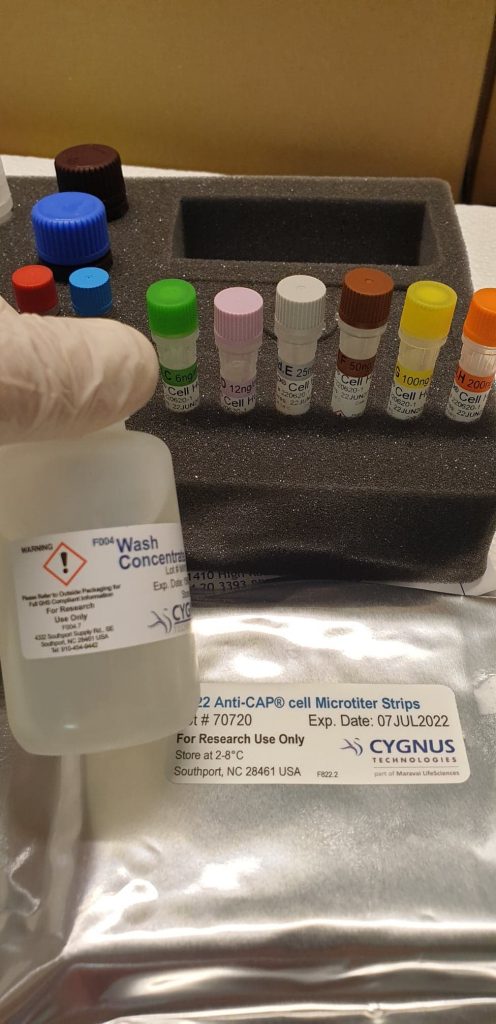Targeting the interleukin-7 receptor alpha by an anti-CD127 monoclonal antibody improves allergic airway inflammation in mice.
Interleukin-7 (IL-7) is crucial cytokine for T cell homeostasis. IL-7 indicators by the IL-7 receptor (IL-7R) which consists of an alpha chain (IL-7Rα), additionally known as CD127 and a typical gamma chain. T lymphocytes, particularly T helper kind 2, play an important position within the pathobiology of allergic bronchial asthma.To examine the results of an anti-CD127 monoclonal antibody (mAb) in a murine mannequin of allergic airway irritation induced by home mud mite (HDM).
Allergic airway irritation was induced in mice utilizing a protocol comprising Four weekly percutaneous sensitizations adopted by 2 weekly intranasal challenges with whole HDM extracts and handled by intraperitoneal injections of an anti-CD127 mAb. Because CD127 is shared by each IL-7R and the receptor for thymic stromal lymphopoietin (TSLP), a bunch of mice was additionally handled with an anti-IL-7 mAb to dam solely the IL-7 signaling pathway.
Anti-CD127 mAb-treated mice confirmed considerably decrease airway resistance in response to methacholine and enchancment in lung histology in comparison with isotype mAb-treated animals. Anti-CD127 mAb therapy considerably decreased the mRNA expression of Th2 cytokines (IL-4, IL-5, and IL-13) and chemokines (CCL5/RANTES) in lung tissue, decreased the secretion of Th2 cytokines (IL-4, IL-5, and IL-13) and chemokines (CXCL1 and CCL11/eotaxin) in bronchoalveolar lavage fluid (BALF), decreased serum HDM-specific IgE, and decreased the variety of whole leukocytes and leukocyte subpopulations corresponding to eosinophils, macrophages, lymphocytes, T lymphocytes, and ILC2 in BALF and lung tissue.
Mice handled with anti-IL-7 mAb additionally confirmed much less allergic airway irritation as evidenced by considerably decrease airway resistance and fewer leukocytes in BALF and lung tissue in comparison with mice handled with the corresponding isotype management mAb.Targeting the IL-7Rα by an anti-CD127 mAb improves allergic airway irritation in mice and presents as a possible therapeutic method for allergic bronchial asthma.
Site-specific antibody fragment conjugates for focused imaging.
This work particulars the usage of amber suppression-mediated genetic incorporation of unnatural amino acids (UAAs), particularly p-azido-l-phenylalanine (pAzF) and p-acetyl-l-phenylalanine (pAcF), to develop site-specifically labeled antibody Fab fragments.
These antibody fragment conjugates signify a novel class of imaging brokers with optimum stability, efficacy, and pharmacological properties, which have demonstrated promising potential for probing and understanding the in vivo bio-distributions of protein targets of curiosity.
This chapter offers basic tips for getting ready these Fab conjugates, and particulars of follow-up bioassays corresponding to single-agent primarily based positron emission tomography (PET) imaging of immune-checkpoint protein PD-L1, and the usage of GCN4-mediated switchable antibody conjugates for near-infrared fluorescent imaging of cancer-related biomarkers.

| M | T | W | T | F | S | S |
|---|---|---|---|---|---|---|
| 1 | 2 | 3 | 4 | 5 | 6 | 7 |
| 8 | 9 | 10 | 11 | 12 | 13 | 14 |
| 15 | 16 | 17 | 18 | 19 | 20 | 21 |
| 22 | 23 | 24 | 25 | 26 | 27 | 28 |
| 29 | 30 | |||||

Categories
- Bird
- Blog
- Conjugation of Synthetic Trisaccharide of Staphylococcus aureus Type 8 Capsular Polysaccharide Elicits Antibodies Recognizing Intact Bacterium.
- Model of vaccine efficacy against HSV-2 superinfection of HSV-1 seropositive mice demonstrates protection by antibodies mediating cellular cytotoxicity.
- My Blog
- PCR
- peptide
- Percp
- Perivascular Lymphocyte Clusters Induced by Gastric Subserous Layer Vaccination Mediate Optimal Immunity against Helicobacter through Facilitating Immune Cell Infiltration and Local Antibody Response.
- peroxidase
- phosphor
- PicoProbe
- Standard
- step
- sterile
- strip
- Target
- TEMED

